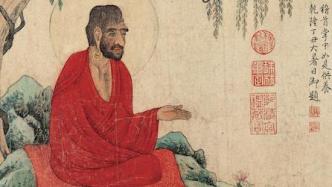
The Paper has learned that the "Essence of Northern Song Dynasty Calligraphy and Painting" exhibition will be on display at the Nezu Museum of Art in Japan on November 3. According to the official website of Nejin Art Museum, this exhibition will include two famous works of the representative painter Li Gonglin of the Northern Song Dynasty, "Five Horses Picture Scroll" and "Filial Piety Picture Scroll", and the famous Northern Song Dynasty figure painting "Suiyang Five Elders Picture" album " There are many precious masterpieces such as "The Longest Portrait of His Life", as well as rare Song Dynasty Buddhist paintings from Japanese temples.
The Song Dynasty was the peak in the history of Chinese calligraphy and painting. Beginning in the Japanese Middle Ages (1185-1573), Japanese connoisseurs of Chinese art began to collect works from the Southern Song Dynasty (1127-1279). In addition, works from the late Heian period (11th and 12th centuries) and the Northern Song period (960-1127) were also brought to Japan at about the same time. In modern times, with the end of the Qing Dynasty and the outflow of Chinese art, Japanese entrepreneurs began to actively collect Chinese art, believing that they should at least stay in Asia. Their collection enabled more fine paintings and calligraphy from the Northern Song Dynasty to be spread to Japan.
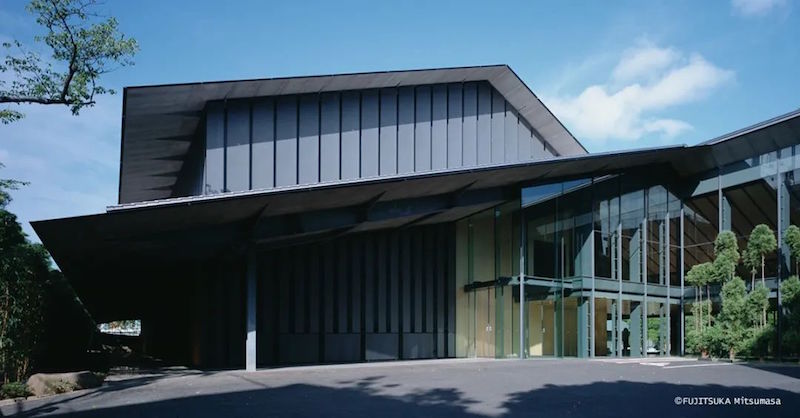
Nezu Museum, Japan©Nezu Museum
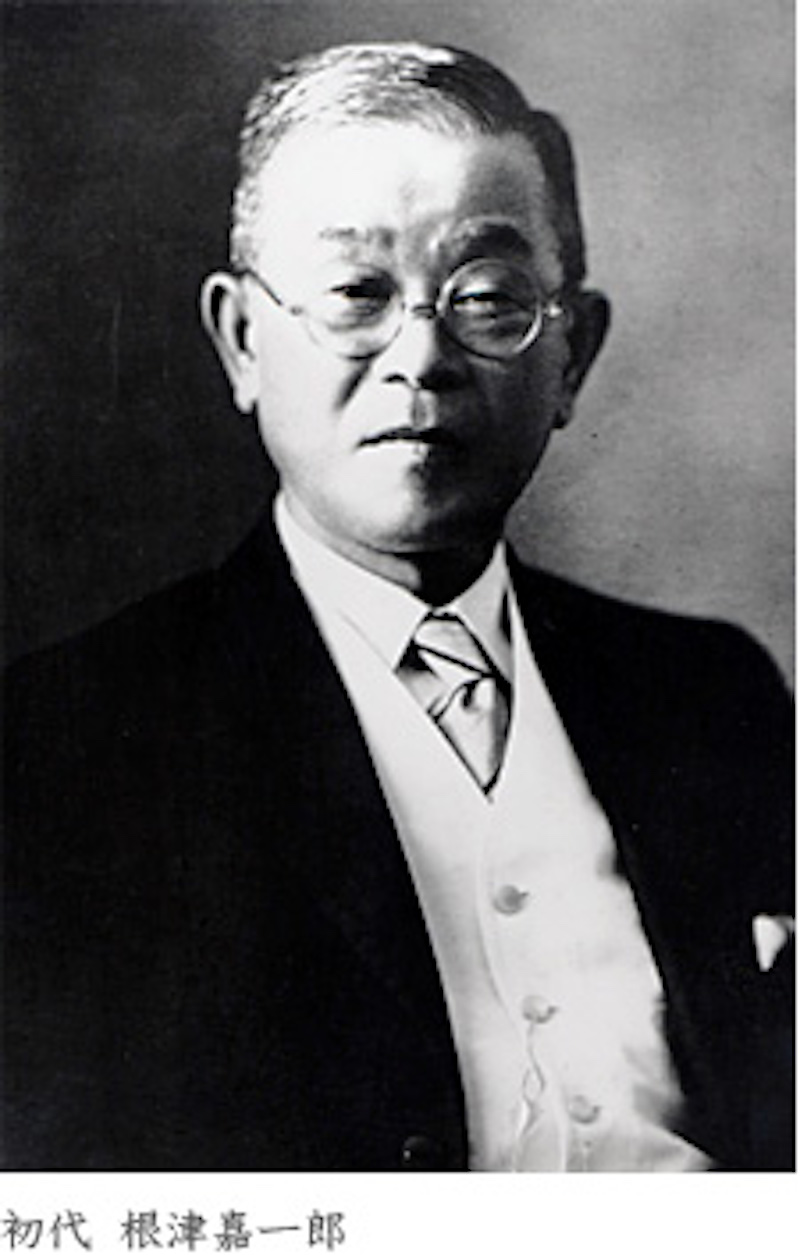
The Nezu Museum of Art, where the exhibition is held, was built to preserve and display the collection of Japanese and Oriental ancient art collected by Nezu Kaiichiro (1860~1940), president of Tobu Railway and the first generation of the Nezu family. "Having fun together with everyone" was the wish of the first-generation Kaichiro. The second-generation Nezu Kaichiro inherited his last wish and founded the foundation in 1940. The Nezu Museum of Art opened the next year. Today, the Nezu Museum of Art houses approximately 7,400 works of art, including 7 national treasures, 88 important cultural properties, and 94 important works of art.
According to relevant art media news, this "Essence of Northern Song Dynasty Calligraphy and Painting" exhibition originated from many years of research and planning by Mr. Itakura Seitetsu, a professor at the Institute of Oriental Culture at the University of Tokyo. In 2004, Mr. Itakura curated the exhibition "Southern Song Dynasty Painting - The World of Talent and Elegance" at the Nezu Museum of Art, which shows his long-standing concern and deep commitment to the field of Chinese art history. This exhibition will once again focus on the art of the Song Dynasty in China. Regarding the exhibition, the Nezu Museum of Art said, "Taking the reappearance of the dreamy original "Five Horses Scroll" 90 years later by Li Gonglin, a representative painter of the Northern Song Dynasty in China, as an opportunity to bring together famous works of the same era."

exhibition poster
According to the official website of the museum, this exhibition will include the dreamy original "Five Horses Scroll" by Li Gonglin, a representative painter of the Northern Song Dynasty in China, Li Gonglin's masterpiece "The Classic of Filial Piety Scroll" which is on loan at the Metropolitan Museum of Art in New York, as well as figures from the Northern Song Dynasty. There are many precious cultural relics such as "Portrait of a Lifetime" in the album of the famous painting "Five Elders in Suiyang".
During the Northern Song Dynasty, Li Gonglin was an unavoidable name. He was the master of "white drawing" and was known as "the first painter of Song Dynasty". Among them, Li Gonglin's "Five Horses Scroll" has existed for more than 900 years and has been circulated in an orderly manner. It was originally collected by the Qing Palace and flowed into Japan in the 1920s. After World War II, it was once considered to have been destroyed by the war. Until 2019, the Tokyo National Museum opened it in The "Five Horses Scroll" donated by an anonymous collector was suddenly displayed in the special exhibition "After the Calligraphy Saint - Yan Zhenqing and the Calligraphy of his Era".
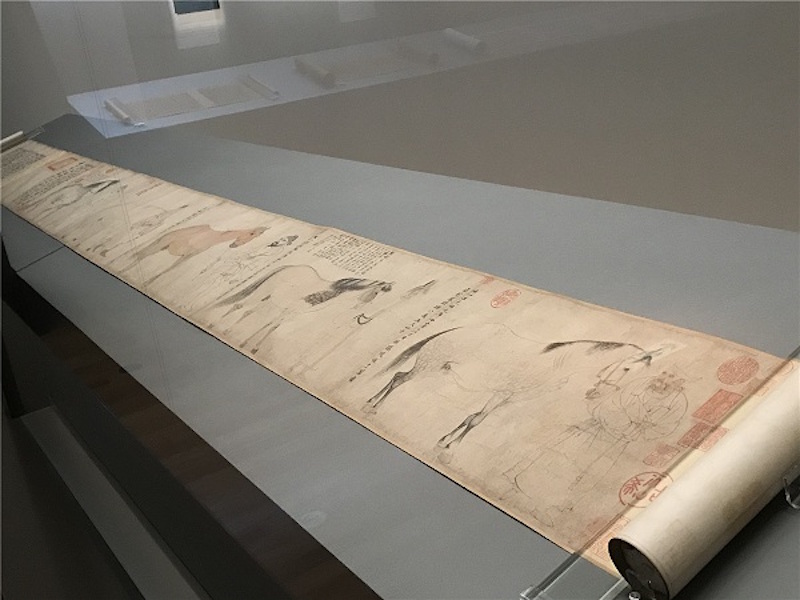
Li Gonglin's "Five Horses" exhibited at the Tokyo National Museum in Japan in 2019
"Five Horses Picture" uses line drawing to draw five horses from the Western Regions as tribute to the Northern Song Dynasty court, each drawn by a Xiguan. There is no author's seal in the painting. The first four horses and the back are each signed by Huang Tingjian with the name, place of origin, age and size of the horse. At the end of the volume, there is Huang Tingjian's inscription "Created by Li Gonglin". The names of these horses that were paid tribute by the countries in the Western Regions are, in order, "Fengtou Cong", "Jinshan Cong", "Haotou Chi", and "Zhao Yebai". The fifth horse is unknown and may be "Manchuan" after research. flower". The first three of the five Xiguan were dressed in Western costumes, and the last two were Han Chinese.
Mr. Itakura Seizhe once said in an interview with the media, "The Five Horses Scroll" is the only existing work that shows the high reproducibility and high expressiveness that Northern Song Dynasty painting can achieve - on the one hand, it attaches great importance to The reproducibility of the depicted objects, on the other hand, shows the literati painter's pursuit of the expressive effect of brush and ink, which are the two most important directions of Northern Song Dynasty painting."
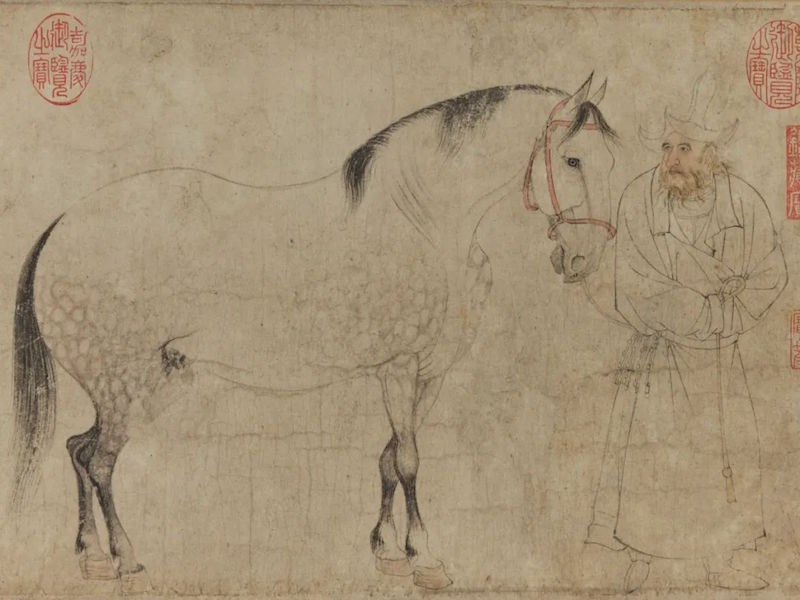
Li Gonglin's "Five Horses" (detail)

Li Gonglin's "Five Horses" (detail)
Another famous work by Li Gonglin, "The Filial Piety Scroll" is stored in the Metropolitan Museum of Art in the United States and will soon come to the Genjin Art Museum to join the "Five Horses Scroll". "The Book of Filial Piety Picture Scroll" is a fifteen-segment picture scroll drawn based on the "Book of Filial Piety". Excerpts from the "Book of Filial Piety" are written in regular script, and the accompanying pictures are drawn using line drawing. The form of calligraphy and painting is combined to serve as an exhortation - During the Song Dynasty, filial piety was one of the Confucian standards respected by people at that time.

Li Gonglin's "Scroll of Filial Piety", collected by the Metropolitan Museum of Art, USA

Li Gonglin's "Scroll of Filial Piety", collected by the Metropolitan Museum of Art, USA

Li Gonglin's "Scroll of Filial Piety", collected by the Metropolitan Museum of Art, USA
According to the interpretation of the Metropolitan Museum of Art in the United States, Li Gonglin's "The Book of Filial Piety" is "deliberately restrained" with almost no coloring. The images and the text content of the "Book of Filial Piety" appear alternately in the long scroll. "The Book of Filial Piety" is not only used to embody the "Book of Filial Piety" itself, Li Gonglin used his artistic criticism, exhortation and subversion to make subtle comments on the filial piety respected in the Song Dynasty. Like the paintings, the inscriptions on the "Book of Filial Piety" are also presented in traditional forms, expressing the pursuit of returning to simple virtues and ordinary life. This volume was once collected by Dong Qichang, and there are four sections of inscription and postscript at the end of the volume. He believed that the scriptures written on the volume were authentic calligraphy handed down by Li Gonglin.
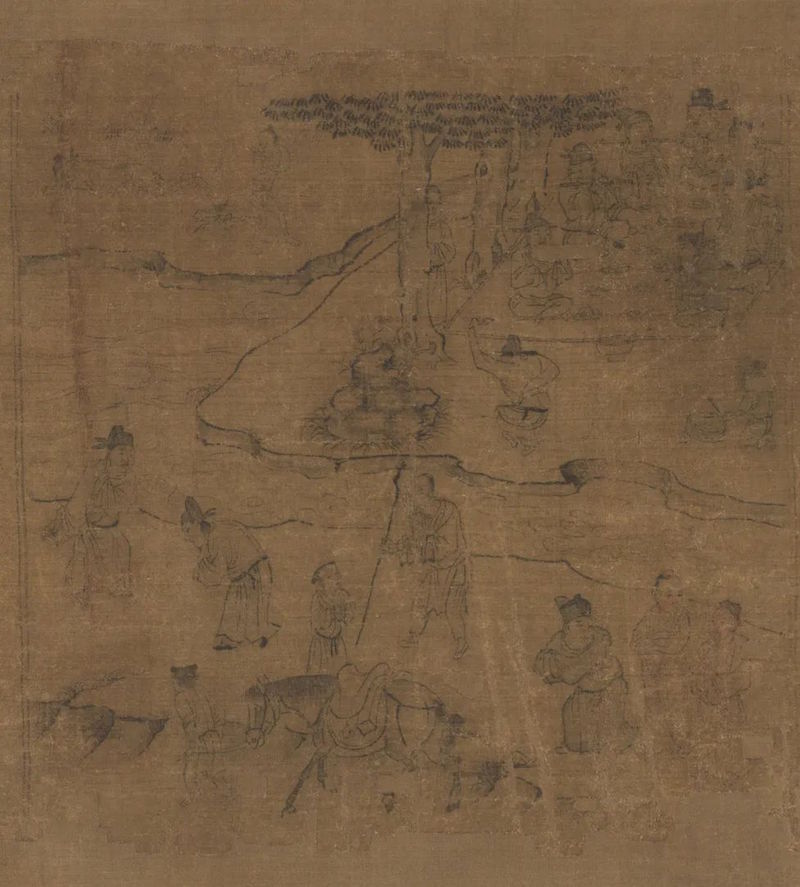
Li Gonglin's "The Classic of Filial Piety" (Part)
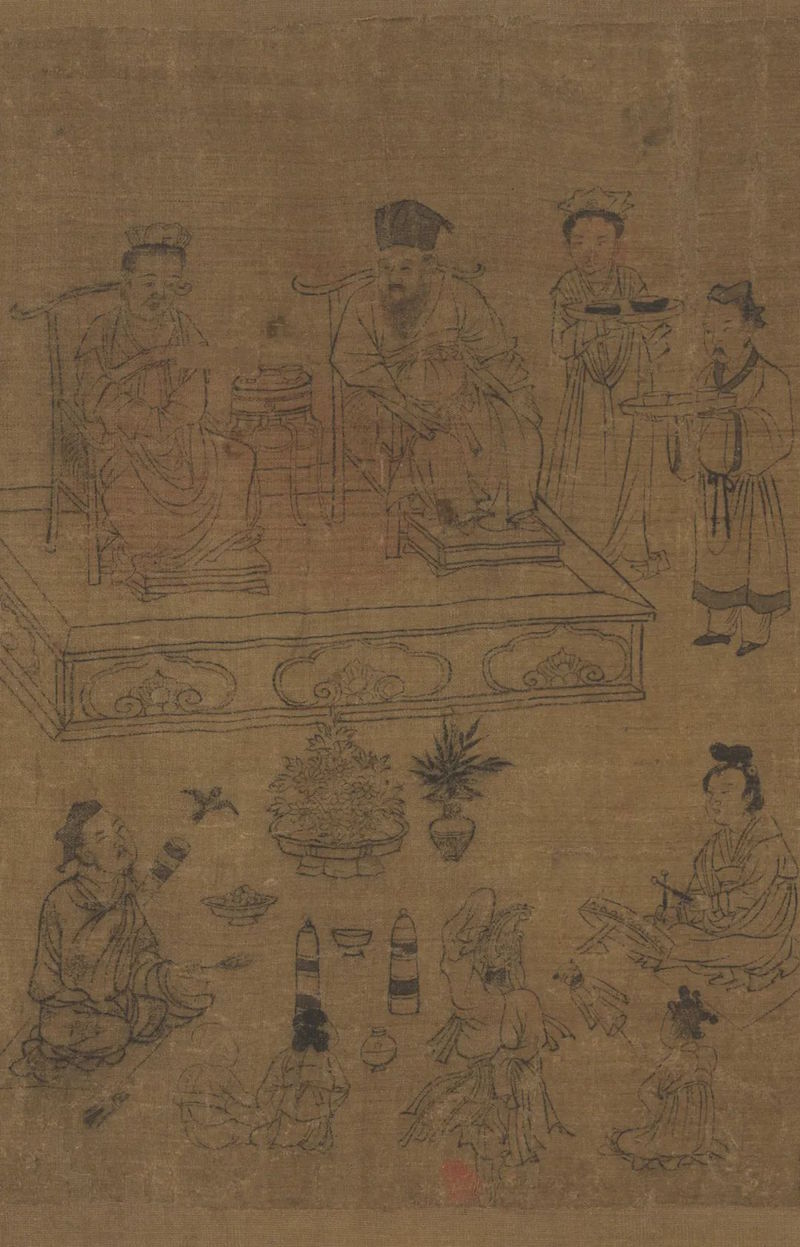
Li Gonglin's "The Classic of Filial Piety" (Part)
In addition to two masterpieces by Li Gonglin, this exhibition will also display the "Portrait of the Last Life" from the "Five Elders in Suiyang". The complete pages of the "Five Elders in Suiyang" album are currently collected in North America. Among them, "Portrait of a Long Life" is collected in the Metropolitan Museum of Art. The "Five Elders" depicted in this album refer to the five important ministers of the Song Dynasty, Du Yan, Wang Huan, Bi Shichang, Feng Ping, and Zhu Guan. After their resignation, they lived in Suiyang, Nanjing (today's Suiyang, Shangqiu, Henan). At that time, the five elders were all At the age of 10, Chang Yan collected and composed poems, which was called "Suiyang Wulaohui" at that time. In the painting, the outlines of the physical parts of Du Yan, Bi Shichang, and Zhu Guan vary widely and distinctly in thickness; in contrast, the line drawings of Wang Huan and Feng Ping's portraits are softer. The Nejin Art Museum said that "Suiyang Five Elders Picture" "shows the extreme level of reality that painting in the Northern Song Dynasty could approach."
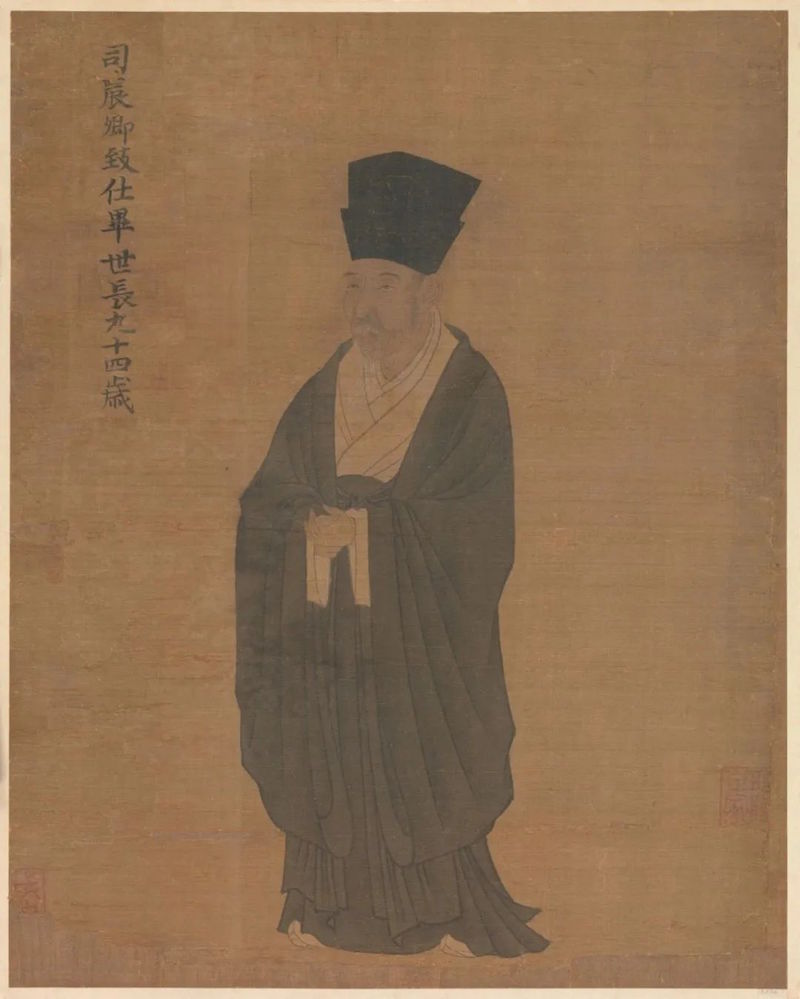
The life-long portrait of the Five Elders in Suiyang is collected by the Metropolitan Museum of Art in New York.
At the same time, this exhibition will also showcase the extremely important "Three Masters of Landscape Painting" from the Kansai calligraphy and painting collection center in Japan, namely Dong Yuan's (biography of the fifth generation) "Chongting Tingtu in the Cold Forest" collected by the Kurokawa Institute of Ancient Culture, and "Chongting Tingtu in the Cold Forest" collected by Chenghuaitang Museum of Art. They are "Qiao Songping Yuan Tu" by Li Cheng, a painter from the Five Dynasties to the early Northern Song Dynasty, and "Jiangshan Tower View Scroll" by Yan Wengui of the Northern Song Dynasty, which is collected by the Osaka Municipal Museum of Art. The art museum introduces Yan Wengui's "Jiangshan Tower View Scroll" as "this work allows viewers to carefully observe the details of the landscape that has been hit by strong winds and heavy rains."
In addition, the exhibition will present the "Picture of the Xiao Temple in Qiu Shan" by Xu Daoning of the Northern Song Dynasty, which is collected by Japan's Yu Nei Museum. This painting is considered a classic painting of the Li Cheng Chuan School, the mainstream of landscape painting in the Northern Song Dynasty. Kyoto's Takatonin and Yamato Bunkakan will respectively present the national treasure-level painting "Landscape" by Li Tang of the Song Dynasty and the "Autumn Pond" by Zhao Lingran of the Northern Song Dynasty.

Yan Wengui's "Jiangshan Tower View Scroll" (detail)
It is worth mentioning that this exhibition will also present a group of rare Song Dynasty Buddhist paintings from Japanese temples. Most of them were solemnly spread to Japan through exchanges among monks during the Song Dynasty. They have been secretly stored in temples for thousands of years and are regarded as sacred objects. , rarely shown to others. For example, the national treasure "Peacock King Statue" in the Ninwaji Temple in Kyoto is considered to be one of the most gorgeous Buddhist paintings of the Northern Song Dynasty in existence. The art museum said that the painting "uses lines of slightly different thicknesses and delicate gradient colors to give the entire painting a unique A solid sense of reality and three-dimensionality." The "Sixteen Arhats" in the collection of Qingliangji Temple in Kyoto is also a rare early Northern Song Dynasty painting handed down in Japan; also from Qingliangji is the Northern Song Dynasty's "Lingshan Transformation Picture" that has been secreted in the body of the Buddha for thousands of years. "; In addition, there is also the "Imperial Secret Collection Interpretation" collected by Nanzen Temple, which inherits the true appearance of Northern Song Dynasty prints and is also an important work in the history of printmaking.

Official website of Nezu Museum of Art, Japan
In addition to paintings, there are also many famous calligraphy works on display, including Huang Tingjian's "Jingfubo Shrine Poems" collected by Yongqing Library, Mi Fu's early masterpiece "Three Calligraphy Volumes in Running Script", Cai Xiang's reply to Renzong's imperial gift The writing notes of the book are "regular script thank you for the imperial calligraphy poem list" and so on. Among them, "Poems of Jingfubo Shrine" is one of Huang Tingjian's masterpieces in his later years. In it, he wrote a poem by Liu Yuxi, a poet of the Tang Dynasty, and added his own postscript.
Nobles in Japan's Heian period (794-1185) loved to make exquisite collections of poems on imported paper and give them to each other as gifts. The writing paper for the "Preface to Ancient and Modern Wakashu" to be exhibited is decorative paper produced during the Northern Song Dynasty.

Huang Tingjian's "Poetry Volume of Fubo Shrine"

Nezu Museum of Art, Japan
The exhibition will be on display until December 3.
(This article is based on previous reports from the official website of Nejin Museum of Art, exhibitions and The Paper)
